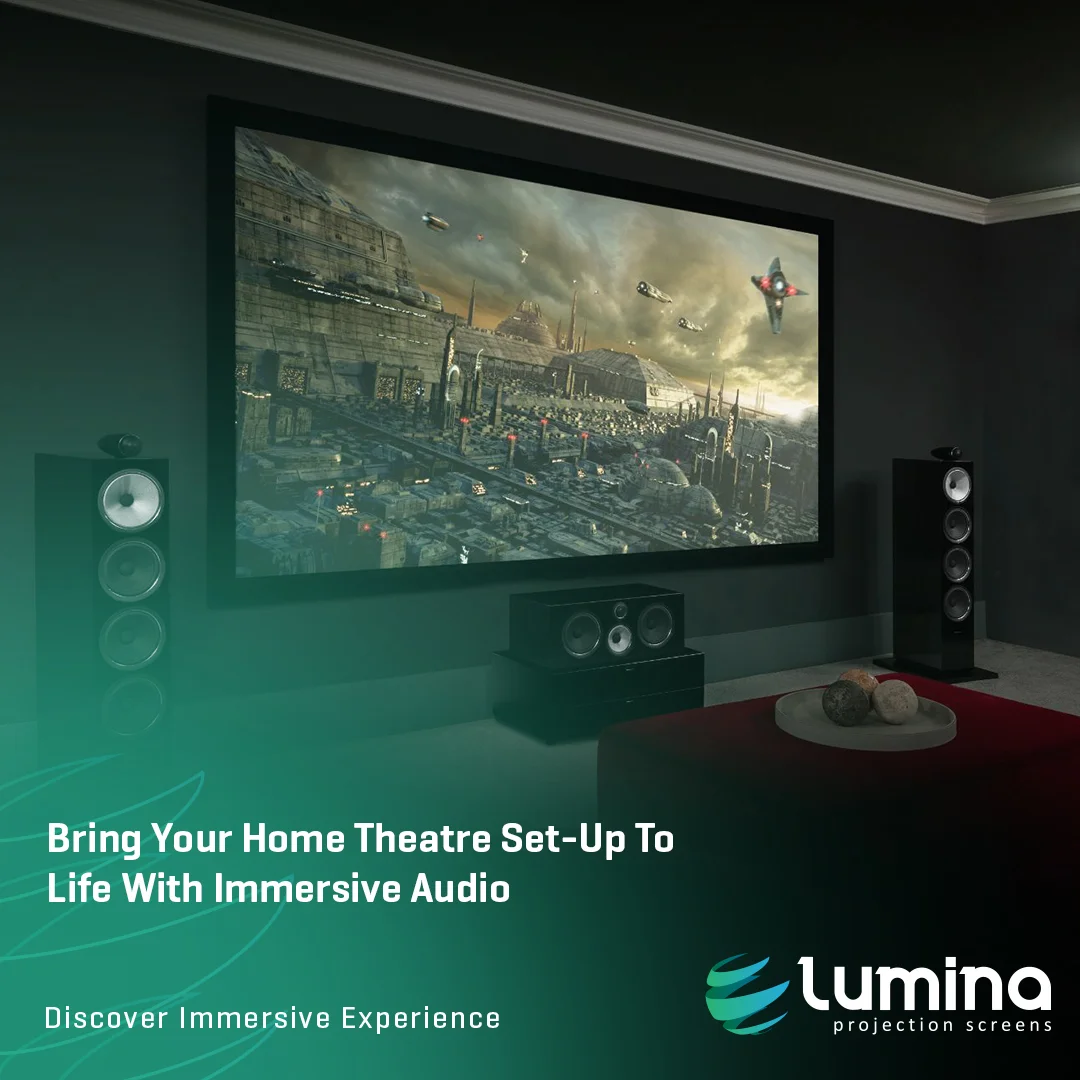
The modern-day theatre experience does have its charms but also comes with major drawbacks. Rushing to buy the best seats in the theatre, running to make the show, paying for parking and overpriced snacks, and finally trying to listen to the film over the neighboring people chatting away. Now imagine watching the same movie in the comfort of your home theatre. Comfortable seating, snacks of your choice, the liberty to start, pause and rewind at your leisure and last but not least, no loud neighbours. Getting the picture quality right is easy. Just invest in a Lumina projector screen. But what about the sound quality you may ask? Can anything beat the Dolby system of a theatre? Of course! All you will need is an immersive audio system.
What is immersive audio?
Simply put, immersive audio means that the speakers create sounds that the listener perceives as coming from an infinite number of directions. An audio mixer assigns different sounds to different speakers to create a lifelike experience. To understand what immersive audio is we need to understand how sound works. Let’s take the example of a jungle scene with birds flying overhead and a tiger crossing the scene from left to right while from behind the camera the sound of the hunter preparing his gun can be heard.
Mono channel
The most basic is a mono channel. Just one channel and one speaker. So the entire audio will come from that speaker and the audience can pinpoint which direction the sound is coming from.
Stereo channels
Then there is stereo, two channels and mostly two speakers. Left and right. The audience is placed equidistant from both and it would appear as if the sound is coming from the space between the speakers in between. On a very good stereo system, one will not be able to pinpoint the source of the sound to only one speaker. But audio-wise, this still does not give the feel of sitting in the jungle.
Surround sound
This issue was taken care of by surround sound. There are six or eight speakers with one dedicated to bass. This is the 0.1 channel when one speaks of 5.1 or 7.1 systems. These systems usually consist of three speakers, left, right, and center. Another set of three or four speakers is for “surrounding” which are placed to the sides and sometimes behind. The final speaker in the set is the low effects speaker which amplifies the deep bass or explosions. The sound will be divided into multiple channels. So the sound of the tiger walking from left to right will move the audio from the left speaker to the center speaker to the right speaker, giving the actual feel of the movement. The sound of the gun being prepared to shoot will be broadcast on the rear speaker and the low effect speaker will take care of the gunshot.
Immersive audio
But what prevents surround sound from being a truly immersive experience? The birds flying overhead. The element of height is missing in these systems. In our normal world, we experience sounds from all directions. The birds flying above, the cars on the road below our flats, the phone ringing beside us, our soundscapes are multidimensional. With the sound of birds flying assigned to the speakers above, we can now experience the scene as if we are in the jungle itself.
This is a very simplified explanation of a very complex engineering process but what we can gather from it is that an immersive audio system is a must for replicating the theatre experience at home. With the right projector screen, an immersive audio system, and comfy seating, you will be all set to experience the magic of movies from the comfort of your home. Happy viewing!
- Date - December 13, 2021